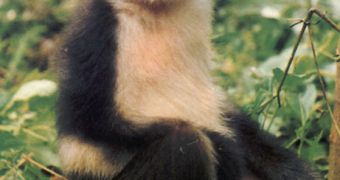Cutting and burning forests are a menace to our living relatives: apes and monkeys. The last refuge of the primates is attacked, but they can also be victims of pouching and illegal wildlife trade. Constructions of roads inside the forests exposes the primates to human exploitation even more.
"Primates in Peril: The World's 25 Most Endangered Primates-2006-2008," is the latest report made by the Primate Specialist Group of IUCN's Species Survival Commission and the International Primatological Society in collaboration with Conservation International (CI), signaling species in imminent danger extinction.
The list includes one subspecies believed to be already gone: Miss Waldrone's red colobus of Ivory Coast and Ghana, while the golden-headed langur of Vietnam counts with just 65 individuals and China's Hainan gibbon just with 17 (!) individuals. 114 (29 %) of the world's 394 primate species and subspecies are now included in the IUCN Red List of species threatened with extinction. "A single football stadium, and a small one at that, could hold all the surviving primates listed in this report," said CI President Russell A. Mittermeier.
8 species on the new list, like the Sumatran orangutan, reduced to 7,000 individuals in 13 isolated populations, and the Cross River gorilla from Cameroon and Nigeria, reduced to 200-300 individuals, also were included in 4 previous reports, while 6 species are new on the list, like a recently found Indonesian tarsier. The top includes 11 primates from Asia, 7 from Africa, 4 from Madagascar, and 3 from South America
Tropical deforestation does not come only with biodiversity loss, but also with at least 20 % increase in the overall carbon dioxide, the main greenhouse gas, overcoming the overall amount damped by world's cars, trucks, trains and airplanes. "By protecting the world's remaining tropical forests, we save primates and other endangered species while helping prevent climate change.", said Mittermeier.

 14 DAY TRIAL //
14 DAY TRIAL //